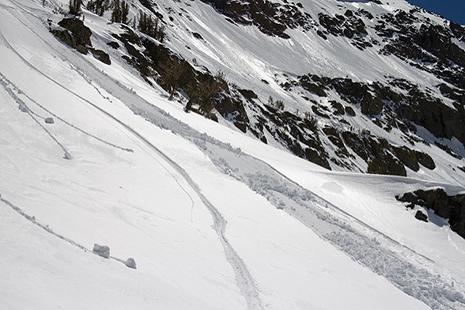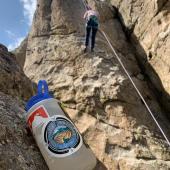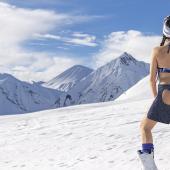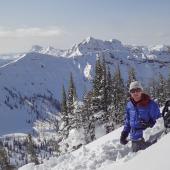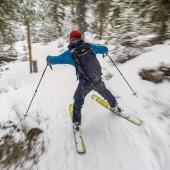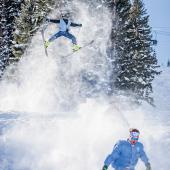Warming Trends
Potential hazards of late-season skiing and riding.
Spring skiing and riding can be some of the best of the season. Good snow coverage, warmer weather and more predictable snow stability (at times) can lead to unmatched conditions. One's ability also improves after a full season which allows skiers and riders to push the envelope in avalanche terrain. While spring conditions can be the best, it can also hold avalanche hazards not encountered during the colder parts of winter.
As snowpack and weather transition into a warmer and wetter spring pattern, there are a number of avalanche variables to pay attention to.
One significant factor influencing spring avalanches is temperature. As temperatures warm above freezing, surface layers of the snowpack begin to melt. If temperatures drop below freezing, this process is slowed allowing the snowpack to adjust to these changes. However, if temperatures stay above freezing for an extended period of time (multiple days in a row), a large influx of free moving water can be introduced into the snowpack. This can create widespread instability and dangerous avalanche conditions. The first prolonged period of above freezing temperatures (both day and night) is a common time for spring avalanches to occur.
Snowpack structure also plays a significant role in springtime avalanche danger. A major contributing factor to springtime avalanches is the presence of buried persistent weak layers. Persistent weak layers (PWL) include depth hoar, surface hoar and near surface facets. The presence of PWL can produce dangerous avalanche conditions months after these layers form and get buried. Depth hoar (faceted snow near the ground) is the most notorious weak layer for producing large spring avalanches. The surprising part about depth hoar is it can form as early as November or December and still produce avalanches in April or May. Buried surface hoar and near surface facets can also produce avalanches during spring conditions.
Springtime avalanches still occur without buried PWL. A common avalanche during warm spring weather is wet loose avalanches or sluffs. This form of avalanche is typically less dangerous than wet slabs. However, wet loose avalanches can entrain large volumes of snow capable of carrying and sometimes burying a skier or rider. Wet loose avalanches generally start at a single point, but fan out as they move downhill. In steep terrain, wet loose avalanches can travel long distances and pick up significant volume and speed. During the right conditions, this type of avalanche can travel into lower angle or flat terrain.
Wet snow avalanches in the spring typically occur during prolonged periods of warm and dry weather. This is generally the opposite of mid-winter avalanches which tend to occur after heavy periods of snowfall. If you’re planning a backcountry excursion, it’s important to pay attention to changing snowpack and weather conditions. Reading the avalanche advisory and staying current on snowpack structure and temperature fluctuations is the best way to stay on top of, rather than being buried under, the snow during the spring season.
Eric Knoff is an avalanche forecaster for the Gallatin National Forest Avalanche Center.



